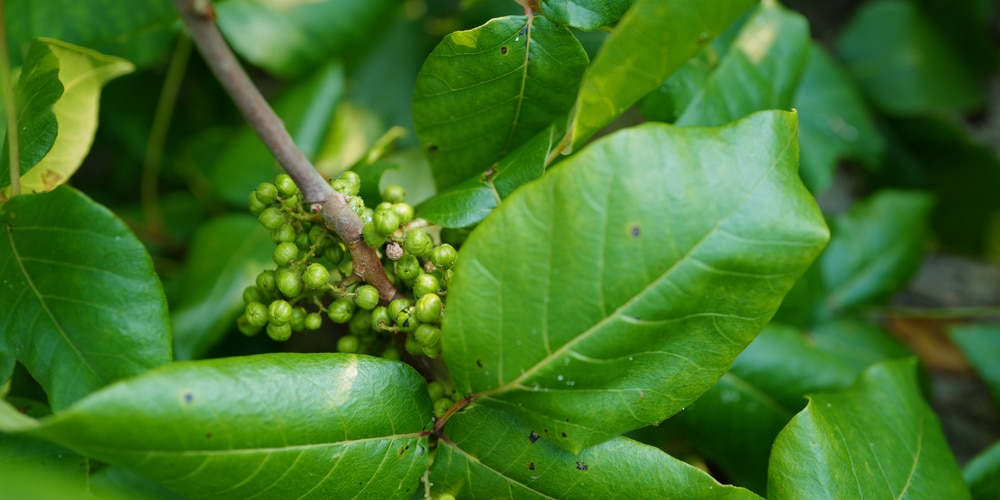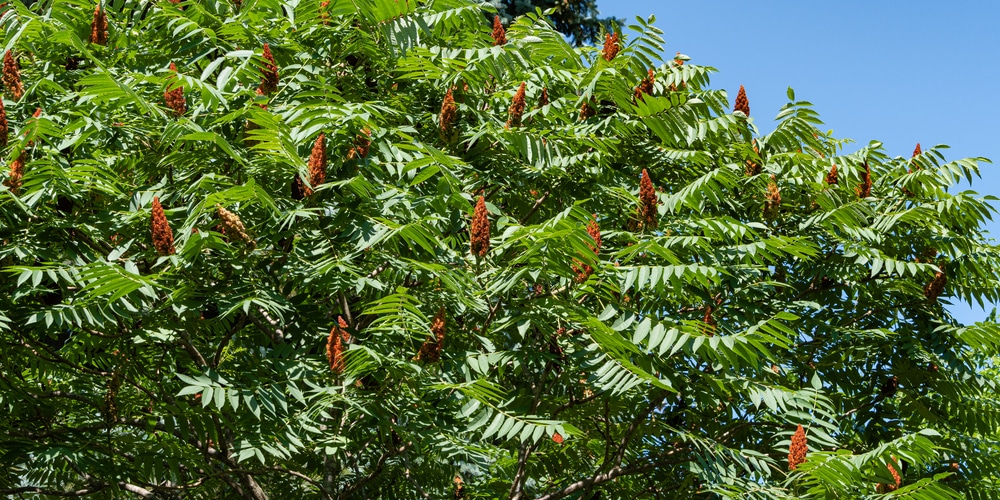If you’re new to gardening, it can be challenging to tell some species of plants apart. Sumac comes in many different varieties, and people often confuse poison Sumac with Staghorn Sumac. These two plants are related, but one causes a rash if touched, and the other doesn’t.
Whether you enjoy walking in the wood or want to plant a Sumac in your yard, plant identification is crucial if you want to avoid a nasty rash. Let’s look at the differences and similarities of poison Sumac vs. Staghorn Sumac so that you can identify these two plants.
What is Sumac?

Sumac is a variety of tall shrubs which can grow to a staggering thirty feet tall. They are deciduous and originate in eastern North America. These plants look great as they have striking colors during the fall.
While Sumac looks very similar, there are many differences between Poison Sumac vs. Staghorn Sumac. It’s essen3Eial to be able to tell the difference between these two plants. You don’t want to end up growing poison Sumac, especially if you have children, as it can cause an excruciating rash.
Poison and staghorn sumac are both part of the same family, known as Anacardiaceae. This botanical family is referred to as the cashew family, as cashew trees are classified as Anacardium. There is a distinction between poison Sumac and Staghorn Sumac, as these plants belong to different genera.
Botanists have named poison sumac Toxicodendron vernix, while staghorn sumac is called Rhus typhina. This shows that poison sumac is toxic in nature.
Poison Sumac vs. Staghorn Sumac Differences
Poison Sumac can give you a bad rash at any time of year if you touch or accidentally brush against the plant. Staghorn sumac and other varieties also come with a warning but are not toxic. These plants can grow very large and take over your yard. Sumac grows via underground rhizomes and can quickly spread across your yard.
Before planting Sumac in your yard, you should learn how to identify the different plants. They both have slightly different growth habits, and the leaves, branches, and berries also look slightly different.
Habitat
One of the main differences between Poison Sumac and Staghorn Sumac is their preferred habitat. Poison sumac grows well in wetland areas as it likes to be planted in moist conditions. If you don’t live near swamps, you may never see poison sumac. This plant is native to places such as New England and grows in swampy conditions.
Staghorn Sumac is also native to New England, and many people visit the area in the fall to see the beautiful foliage. This variety of Sumac grows along the roadside and prefers drier soils.
Another significant difference between these two species is the number of plants found growing together. Staghorn Sumac spreads quickly, and you’ll see large stretches covered in the shrub. It’s doubtful that you’ll see one staghorn sumac by itself unless someone has recently planted the shrub, and it hasn’t had a chance to spread yet. Poison Sumac, on the other hand, is a solitary plant. You’ll likely see this variety growing alone on swampland.
Identification
During the fall, Sumac shrubs produce berries that can be used to tell the species apart. Poison sumac has berries that are separate rather than fused together as the Staghorn berries are. Poison Sumac berries also droop down further and grow on small stems. They also produce a berry that is flatter than the Staghorn.
Poison Sumac has white berries which will fall to the ground once ripened. Staghorn sumac produces red berries that grow very close together and are arranged in cone-shaped tufts.
Poison Sumac and Staghorn Sumac both have leaves that are compound and comprised of small individual leaflets. While their leaves do look similar, they have enough differences that they can be easily identified.
Poison Sumac leaves have smooth edges, while the leaves of Staghorn sumac are slightly serrated. You can also count the number of leaflets on an individual leaf. Staghorn sumac leaves contain more than thirteen leaflets, while Poison Sumac generally has less than thirteen.
When identifying Sumac, you can also have a look at the twigs. On Poison Sumac, twigs and branches are smooth, while a Staghorn Sumac has tiny hairs covering the twigs.
Conclusion
As you can see, there are many differences between the Poison Sumac vs. Staghorn Sumac. Be careful not to touch the plants while attempting to identify them. If you’re looking at a Poison Sumac, you’ll end up with a nasty rash if you touch the leaves or branches.
